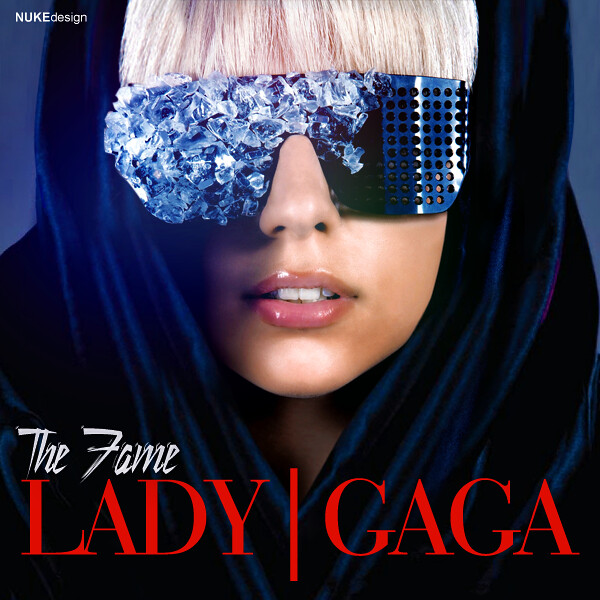
“I used to walk down the street like I was a fucking star,” Lady Gaga told Rolling Stone for her first cover story in 2009. She was talking about her state of mind before her big breakthrough the year prior, but by the time she spoke to RS, Gaga didn’t need to pretend. She had become a bona fide megastar and an heir to the pop throne, just like the Madonnas, Janets, and Britneys before her. And it was all thanks to the self-fulfilling prophecy of her debut album, boldly titled The Fame.
Prior to The Fame, Gaga was languishing in New York’s Lower East Side as just another hopeful. The Manhattan-born Stefani Germanotta dropped out of NYU, where she studied music and would perform piano ballads at the legendary, nearby Bitter End. She embedded herself in the club scene, launching Lady Gaga and the Starlight Revue with Lady Starlight. The pair’s pop-burlesque show paid tribute to the Seventies and helped to mold Gaga’s onstage persona, the same one the world would meet in a few years’ time.
“I suppose that’s where the vanity of the album came from,” Gaga continued in her RS interview. “I operate from a place of delusion — that’s what The Fame is all about.” Gaga also admitted to the pernicious habits that mingled with her self-professed narcissism and artistic perfectionism. She recalled that after leaving college she would spend hours in front of a mirror in her tiny downtown apartment, high on cocaine, practicing her hair and makeup until she felt like a star.
Fame and the results of its pursuit are at the center of the album. These were ambitious themes from someone who was a musical unknown until the single “Just Dance” and an accompanying video helmed by Melina Matsoukas (Lemonade, Insecure) took over the charts, eventually making it to Number One in the U.S. and five other countries. On the title track, she proposes the album’s thesis: “I can’t help myself/I’m addicted to a life of material/It’s some kind of joke/I’m obsessively opposed to the typical.” It was aspirational pop with songs that sounded as luxurious as she wanted to be (though later albums like Born This Way and Joanne thrived on her returning to the grittier roots of her past). Gaga used star power, the desire for it and her lack of it at the time she wrote the album as metaphors for love, sex, and her identity.
This approach is most effective on “Paparazzi,” maybe the album’s most underrated moment of lyrical brilliance. She becomes the paparazzi in question when it comes to the obsessive, immersive love she has for the man at the center of the song. The song is a pop tale of toxic love: bad romance — something she’s proven time and time again to know a thing or two about — served on a diamond-encrusted silver platter.
A pop weirdo’s wishful thinking transforming into inescapable reality would become one of pop’s greatest Cinderella stories. For years, the name Lady Gaga became synonymous with the word “pop” because songs like “LoveGame,” “Poker Face” and “Just Dance” were not only platinum-selling megahits but also pieces of music and art that challenged the way we thought pop could look, act and sound. Talk of disco sticks, metaphors for bisexuality and hypnotic club tales were worlds away from the virginal bubblegum of the late Nineties and built upon the proto-EDM of the year’s biggest hits (Flo Rida’s “Low” was 2008’s longest-running Number One). Even the way Lady Gaga dressed, forsaking conventionally “pretty pop princess” trends for high-fashion concepts, shifted the music world’s idea of what “sexy” could even be.
What followed has been a series of artistic highs and lows. The deluxe edition of The Fame — The Fame Monster — was an even more ambitious extension of the world-shifting work she had done on her debut. Her videos became more ambitious (see the Alexander McQueen-inspired alien harem of “Bad Romance” or the futuristic Thelma & Louise adventure co-starring Beyoncé in “Telephone”). Born This Way further affirmed her stance as a pop outcast meant for other outcasts; she also returned to the metal clubs of her pre-pop days and fused the two worlds together, with varying results. ArtPop and Joanne further challenged her musically, taking her to the furthest extremes of her range (Warholian auteur and stripped-down country queen, respectively). In between, she won a Golden Globe for her acting, moonlighted as a lounge singer alongside Tony Bennett and found herself locking in a forthcoming Las Vegas residency — making her one of the youngest mainstream pop stars to do so — not to mention land a major Hollywood role.
A decade of Gaga has already felt like a full generation of game-changing musical history. Her fame has only just begun.
By Brittany Spanos, www.rollingstone.com - August 19th, 2018
Comments
Post a Comment